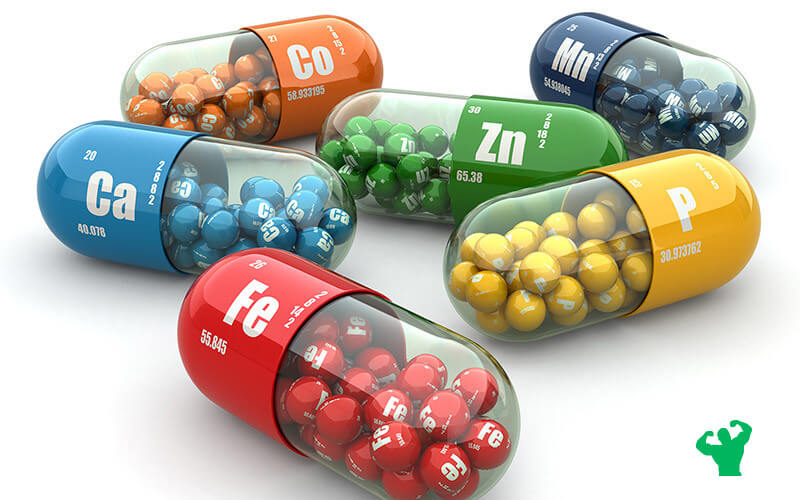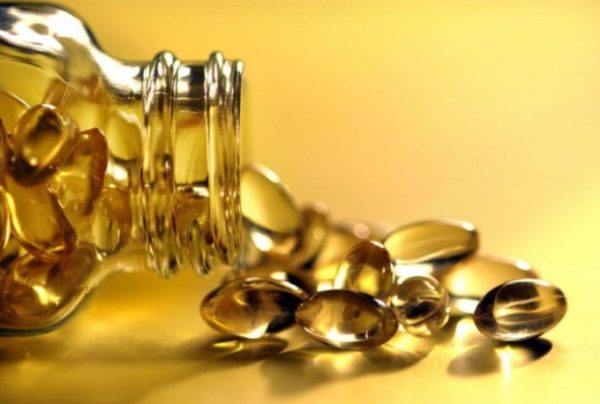
Delivery to the United States 10 days.
You can pay with your card!

Aromazin (exemestane) is a drug irreversibly inhibiting the aromatase enzyme, which is responsible for the excessive aromatization of aromatizing AAS. Used during the course to reduce the level of excess estrogen, dosages range from 12.5 mg every other day to 6.25 mg every three days. The dosage should be selected individually, since excessive suppression of estrogen in the body may be fraught with a drop in libido, too strong an increase in "bad" cholesterol, depressed mood and "flat" muscles. Aromazin is the best and safest drug for post-cycle therapy (PCT). By reducing estrogen levels, it allows you to quickly restore your own testosterone production, as the high estrogen content in the blood suppresses the arch of the hypothalamus-pituitary-testes. The dosage for PCT is 12.5 mg every day for 3 weeks. It has a weak anabolic effect. The drug can contribute to a significant decrease in pressure and swelling on the course of AAS, as it reduces estrogenic activity, but muscle pumping can significantly suffer from this. If you do not like a significant decrease in the pumping effect from the effects of Aromasin and you have no problems with pressure, then it is better to use Tamoxifen / Toremifen, since they only block estrogens in certain tissues.
Anastrozole is a reversible aromatase inhibitor. Contacting aromatase, blocks its action, but at the end of the action, it ceases to block the enzyme, unlike aromatazine, which literally disables aromatase. Dosages to prevent excessive aromatization on the course are from 0.5 mg every other day to 0.25 mg every other day or two. As in the case of Aromazin, the dosage should be selected individually. The standard dosage for PCT is 0.25-0.5 mg every day. The anabolic properties of the drug were not detected. The suppression of estrogenic side effects is the same as that of aromasin.
Tamoxifen is a selective antagonist of estrogen receptors. This means that it blocks the action of estrogen only in certain tissues, such as the mammary gland. Studies have shown that estrogen is also blocked in the hypothalamus, which allows this drug to be used to restore testosterone production in PCT. The same property allows you not to be afraid of gynecomastia and enjoy the amazing pumping effect, since estrogens strongly retain water. The dosage on the course is 20 mg every day. The dosage in the PCT is 20 mg every day. Recent studies have shown that in the long term and with continued use of tamoxifen, there have been cases of the development of endometrial and liver cancer (G. M. Williams et al., 1997). The oncogenic effect is associated with stimulation of hyperplastic processes in the endometrium (T. Powles, 1994; J. A. Styles et al., 1994), impaired chromosome structure (E. Myantila, 1997), oxidation of the drug in the liver, as well as its unstable structure. The implementation of the estrogen-like effect of tamoxifen itself cannot be ruled out (E.G. Novikova et al., 2002). Toremifene is an analogue of tamoxifen, devoid of these shortcomings. The only drawback of toremifene is the price and high dosage, but as they say - they do not save on health!
Chorionic gonadotropin is a peptide hormone obtained from the urine of pregnant women. It refers to the so-called gonadotropic hormones - gonad stimulants in men and women. It is used on the AAS course for testicular stimulation. It can also be used to increase testosterone in the blood with hypogonadism. Usually every 5-6th week of the course of AAS is used, the typical dosage is 1000 units every other day, the total amount of the hormone used in this quality is 5000 units.
 One of the cheapest and optimal vitamin complexes. It is very effective in maintaining an adequate level of various vitamins in the body. For use in sports, the dosage is about 2-3 tablets per day. Athletes need to remember the need to replenish the reserves of vitamins in the body, a lack of vitamins can lead to a decrease in athletic performance. The course of use is 30 days, the period between courses is from a month to three.
One of the cheapest and optimal vitamin complexes. It is very effective in maintaining an adequate level of various vitamins in the body. For use in sports, the dosage is about 2-3 tablets per day. Athletes need to remember the need to replenish the reserves of vitamins in the body, a lack of vitamins can lead to a decrease in athletic performance. The course of use is 30 days, the period between courses is from a month to three.
Composition:
Asparkam is a source of potassium and magnesium ions, regulates metabolic processes. The mechanism of action is presumably associated with the role of asparaginate as a carrier of magnesium and potassium ions in the intracellular space and the participation of asparaginate in metabolic processes. Thus, Asparkam eliminates the imbalance of electrolytes, reduces the excitability and conductivity of the myocardium (moderate antiarrhythmic effect). Asparkam is very important for bodybuilding, as potassium and magnesium are one of the main macronutrients that help muscle growth. Dosage 1-2 tablets. 3 times a day after meals. The course of treatment is 3-4 weeks. If necessary, it can be repeated.
An effective pre-workout complex that you can find in any pharmacy. Caffeine is sold in a pharmacy in the form of sodium caffeine-benzoate tablets, which contains about 33% pure, anhydrous caffeine. Broncholitin is a cough syrup containing a stimulant ephedrine. Take 4 tablets of caffeine-sodium benzoate and 1.5 caps of Broncholitin 30 minutes before your workout. Powerful and effective training is provided to you! Ephedrine quickly induces tolerance. When you feel a significant decrease in effects, increase the dosage of the latter to 2 caps. The course of use is 30 days, then rest 20-30 days. This ligament is also very effective fat burning.
 The strongest pharmacy adaptogen. The extract from the roots and rhizomes of Rhodiola has a pronounced stimulating property, significantly increases the volume of dynamic and static work. The increase in working capacity is especially noticeable when using rhodiola preparations against the background of fatigue and when performing heavy physical work. At the same time, Rhodiola normalizes metabolic processes, contributes to the economic expenditure of energy resources and their quick synthesis, improves energy metabolism in the muscles and brain due to the earlier use of not only carbohydrates, but also fats as oxidation substrates. Like ginseng preparations, Rhodiola rosea extract has adaptogenic properties and also prevents the development of hyper- and hypoglycemia, leukocytosis and leukopenia in rabbits (Sokolov, Zamotaev, 1988). Rhodiola extract in the experiment has an antitumor and antimetastatic effect, enhances the action of other cytostatics, reduces the level of hyper - and hypoglycemia, activates the function of the thyroid gland. Also, the use of the extract and tincture of Rhodiola rosea increases the body's resistance to infections, x-ray and ionizing radiation, toxic chemicals (gasoline, acetone, ethyl alcohol, chlorophos, medicines, etc.). In the experiment, the administration of 1 ml / kg of Rhodiola extract to rats within 8 days increased their production of β-endorphin by 4 times. Increased endorphin production can be considered as one of the mechanisms of stress-protective action.
The strongest pharmacy adaptogen. The extract from the roots and rhizomes of Rhodiola has a pronounced stimulating property, significantly increases the volume of dynamic and static work. The increase in working capacity is especially noticeable when using rhodiola preparations against the background of fatigue and when performing heavy physical work. At the same time, Rhodiola normalizes metabolic processes, contributes to the economic expenditure of energy resources and their quick synthesis, improves energy metabolism in the muscles and brain due to the earlier use of not only carbohydrates, but also fats as oxidation substrates. Like ginseng preparations, Rhodiola rosea extract has adaptogenic properties and also prevents the development of hyper- and hypoglycemia, leukocytosis and leukopenia in rabbits (Sokolov, Zamotaev, 1988). Rhodiola extract in the experiment has an antitumor and antimetastatic effect, enhances the action of other cytostatics, reduces the level of hyper - and hypoglycemia, activates the function of the thyroid gland. Also, the use of the extract and tincture of Rhodiola rosea increases the body's resistance to infections, x-ray and ionizing radiation, toxic chemicals (gasoline, acetone, ethyl alcohol, chlorophos, medicines, etc.). In the experiment, the administration of 1 ml / kg of Rhodiola extract to rats within 8 days increased their production of β-endorphin by 4 times. Increased endorphin production can be considered as one of the mechanisms of stress-protective action.
When consuming large amounts of food, the gastrointestinal system of many people does not cope with the load. As a result of this, various side effects occur, such as increased gas formation (flatulence), heaviness in the stomach, weakness, etc. As soon as you feel these symptoms when using enhanced nutrition, you should try to eat fractionally, reducing portions of food and chewing food more carefully. If this recommendation does not help in the fight against poor digestion, then you should pay attention to digestive enzymes. The pharmacy sells many types of digestive enzymes, which are represented by pancreatin (an enzyme preparation obtained from the pancreas of pigs and cattle). Pancreatin contains lipase (a fat-breaking enzyme), amylase (an enzyme that breaks down carbohydrates) and a protease (an enzyme that breaks down proteins into amino acids). If you decide to use these drugs, then the best of them are Creon (expensive) and Panzinorm (cheaper). For the first time, it is worth trying to take one tablet of Creon 10,000 or Panzinorm 10,000 during each meal. If after 2-3 days your digestion does not change, only then it is worth increasing the dosage to 20,000 - 30,000 units per dose. All pancreatin preparations are protected from the action of stomach acid by the enteric coating. It is recommended to immediately drink tablets / capsules with water, since a long stay of these forms of pancreatin in an alkaline saliva environment can cause the breakdown of the protective membrane. In everyday life and even among experts, the erroneous opinion is widespread that taking medications with digestive enzymes can lead to a decrease in the production of their own enzymes. This opinion is supported by the universal rule of physiology: in the body, everything is regulated by the feedback mechanism. And if we artificially increase the concentration of any endogenous substance, then by the feedback mechanism the body is trying to reduce its production. Feedback in response to the intake of exogenous enzymes does exist, however, many years of experience with the use of enzymatic preparations have shown that violations of their own secretory function do not develop [Malfertheiner P. · Domínguez-Muñoz J.E. Effect of Exogenous Pancreatic Enzymes on Gastrointestinal and Pancreatic Hormone Release and Gastrointestinal Motility. Digestion 1993; 54: 15–20]. Swedish study in 1998 [Friess H. Int. J. Pancreatology 23: 115] did not detect any changes in human enzyme production after 4 weeks of treatment with oral pancreatic enzymes. Another early study [Mossner J, Pancreas 6: 637, 1991] showed that swine pancreatic extract placed in the small intestine actually increased pancreatic enzyme production, but if pure trypsin (an enzyme protease) was used instead, there was a decrease pancreatic secretion, but only with a very high level of trypsin. Walkowiak's 2003 paper (Eur J Clin Invest. 33:65, 2003) notes that high-dose pancreatic enzymes (5 g per day for 7 days) could reduce pancreatic elastase, measured in stool, by 50%. This effect is completely